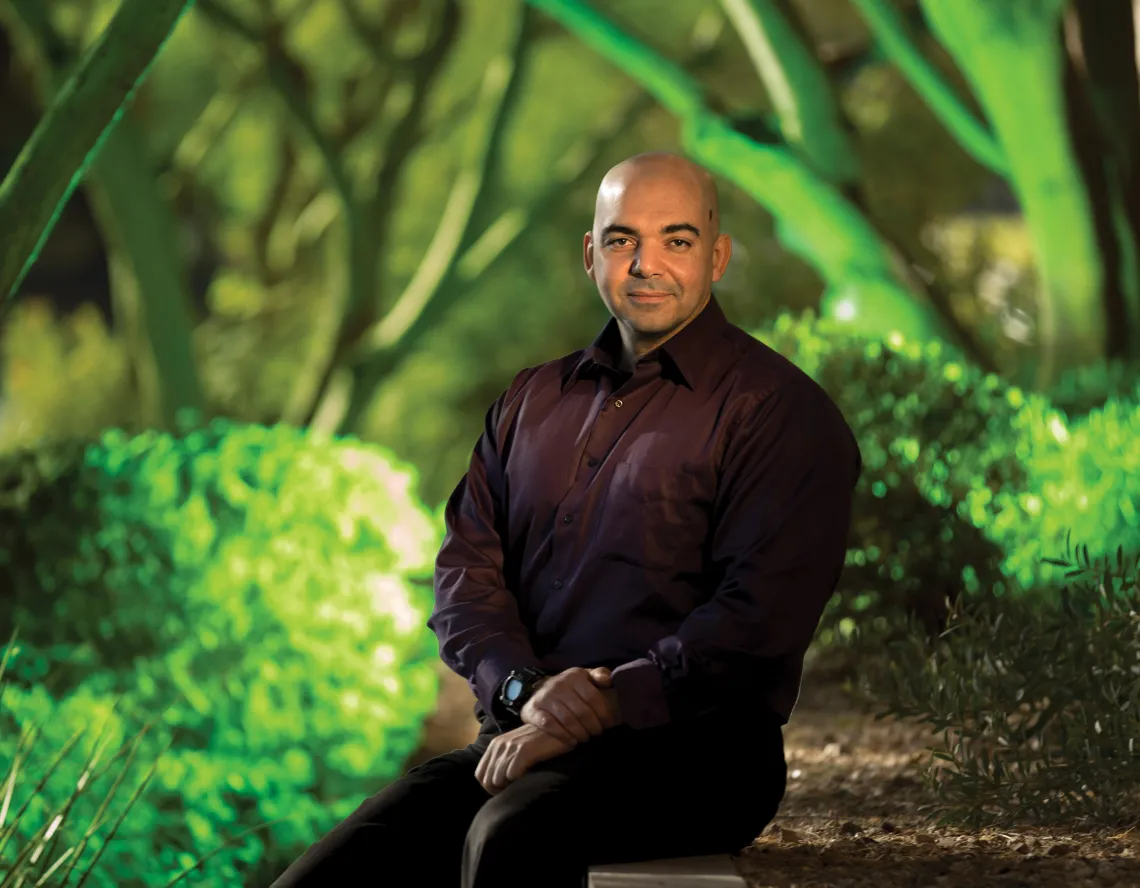Seeing Green, Feeling Relief
New ways to manage chronic pain

Mohab Ibrahim
When people are mad, they’re said to “see red.” But when they’re in pain from chronic maladies such as migraines or fibromyalgia, Mohab Ibrahim ’98 ’02 ’04 ’08 thinks they should be seeing green.
Ibrahim is the director of the Comprehensive Pain Management Clinic at Banner – University Medical Center South, and his surprising research shows that simple exposure to the color green through special lights offers significant relief to chronic pain sufferers. While the reason remains a mystery, the results are very promising. Participants in one study “didn’t even return the lights we gave them,” he says, “because they were so happy with the results.”
You could call it one more bright point in the career of this four-time University of Arizona alumnus, who earned a bachelor’s degree in biochemistry, a master’s and doctorate in pharmacology and toxicology, and, finally, a medical degree. Today, Ibrahim’s work is benefiting Arizonans who participate in his research. Soon, it may lessen the nation’s reliance on highly addictive opioid pain relievers.
Ibrahim discovered green therapy almost by accident, when his brother complained of a headache. Ibrahim suggested over-the-counter medications such as ibuprofen or aspirin. His brother, however, preferred to just sit beneath a tree, where he always found relief.
Ibrahim was intrigued. So when he had a headache himself, he made a beeline for the nearest park. And sure enough, he was soon feeling better. But was it just a coincidence?
To find out, he turned to the lab. He was joined by UA pharmacology professor Rajesh Khanna; together, they found that rats exposed to uncomfortable levels of heat felt far less pain when green lights glowed in their cages. The lights seemed so beneficial that Ibrahim began using them with people. After staring at LED lights for up to two hours a day, some study participants said their pain had been reduced by at least 50 percent.
The mechanism of green-light-induced pain relief remains unknown; however, collaborative work at Ibrahim and Khanna’s labs produced some interesting preliminary results. No one knows what the evolutionary advantage is of having green light as a potent pain reliever, but Ibrahim believes it could be related to our associations with lush, green landscapes signifying peace and tranquility.
Regardless, the new therapy has illuminated a possible cost-effective alternative for pain sufferers. “It’s cheap, it’s effective and it has practically no side effects,” he says. And it may even become a fashion statement, as Ibrahim plans in the future to fit pain sufferers with contact lenses colored — you guessed it — green.
Many people helped advance this project, including UA faculty members Rajesh Khanna, Phil Malan, Frank Porreca, Todd Vanderah, Amol Patwardhan and May Khanna, and lab technicians Kerry Gilbraith and Jessica Hanson.
